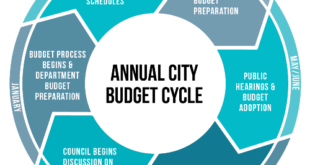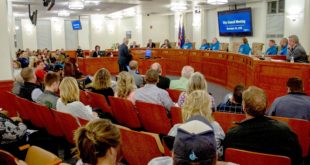By Jim Pumarlo
Election coverage was a priority when I toiled behind the editor’s desk. It was all-hands-on-deck in the newsroom as we sought information to help voters make their choices.

As a final step, we endorsed in all races from the city council to U.S. president. Many newspapers today, small and large, have regrettably dropped weighing in on the editorial page. I believe it’s a missed opportunity, but that’s a topic for a different column.
Newspapers do have the opportunity to provide meaningful coverage at a time when substantive debate is often lost in the volumes of campaign rhetoric. Campaigns are increasingly sophisticated in targeting their audiences. The messages, unfortunately, are all too often sound bites that lack meaningful context.
Newspapers should step up and fill the void – use your community knowledge to provide an inside look at candidates, to set a framework for constructive debate on issues. It takes work, and now is the time to start planning for the November 2022 elections.
Comprehensive election coverage can be exhausting and strain newsrooms already strapped for resources. Focus efforts on those races that matter most to your readers and those contests where you have the greatest insight. Local contests should take priority.
Here is one checklist, in no particular order, to consider as you prepare for elections. You can certainly expand during a brainstorming session with staffs.
- Examine the races. – Review coverage from the previous election to identify issues that generated the most attention and see if the topics are relevant in this cycle. Go beyond the newspaper family, and solicit perspectives from others in the community.
- Create master calendar. – Identify key internal and external dates that provide benchmarks for substantive coverage. Internal dates include such things as a schedule for candidate profiles and question-answer on hot-button topics. External dates include such items as campaign finance reports and candidate forums.
- Be uniform in announcing candidacies. – Incumbents and challengers alike will scrutinize all aspects of coverage. Consistency is key, especially when announcing their candidacies. It’s likely the first opportunity to introduce many of these individuals to readers, and it sets the tone for fair and responsible coverage of races and issues.
- Plan play-by-play coverage. – Campaigns are a continuum from initial announcements to rallies and debates to the barrage of press releases. Each element prompts a decision. Does the statement or event warrant broad public attention? If so, does each candidate deserve a voice and have an opportunity to be in your report?
- Stick to issues: Coverage of local races can be especially challenging as candidates are friends, neighbors and co-workers. The best course is to focus on issues and avoid straying into personalities.
- Acknowledge that some contests simply fall off the radar. Candidates for state and federal offices are certain to seek attention for their campaigns. News organizations have strong arguments to devote resources to local candidates. At the same time, set criteria for reports on regional and/or statewide races.
- Identify criteria for covering debates. – Evaluate the sponsors. Consider the timing of debates with respect to other planned stories.
- Be alert to races that demand special attention. – Plans must be flexible. Staffs must be ready to pivot for distinctive developments in races that may not have been on the radar.
- Enlist a citizens panel: Take the initiative to provide a variety of perspectives on the issues and candidates. Consider enlisting a panel of citizens representative of community demographics. Solicit their observations at critical twists and turns during the campaign. Postings can be online, providing timely and relevant commentary.
More and more citizens are turned off by today’s political dynamics, and for good reason. Campaigns increasingly ramp up rhetoric that serves to energize their bases but also further polarizes voters. Hyper-partisan politics unfortunately is becoming commonplace in local politics, too.
Newspapers have the opportunity to play a critical role by setting standards for fair and responsible coverage of public affairs. Take the lead in elevating the quality of debate in the months-long election season. As one editor aptly stated, “To sustain democracy, you need people who care about facts and want to read facts. That’s what we’re here for.”
Grab the opening. A civilized and meaningful discourse on the issues will benefit the candidates, the voters and your community.
Jim Pumarlo is former editor of the Red Wing (Minn.) Republican Eagle. He writes, speaks and provides training on community newsroom success strategies. He is author of “Journalism Primer: A Guide to Community News Coverage,” “Votes and Quotes: A Guide to Outstanding Election Coverage” and “Bad News and Good Judgment: A Guide to Reporting on Sensitive Issues in Small-Town Newspapers.” He can be reached at www.pumarlo.com and welcomes comments and questions at jim@pumarlo.com.
 Nevada Press Association The best in Nevada journalism since 1924
Nevada Press Association The best in Nevada journalism since 1924



